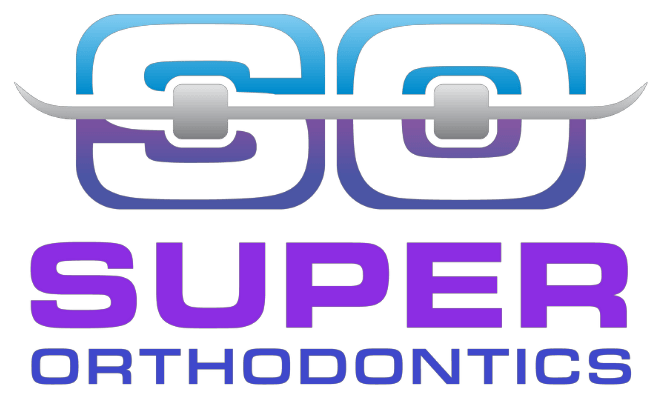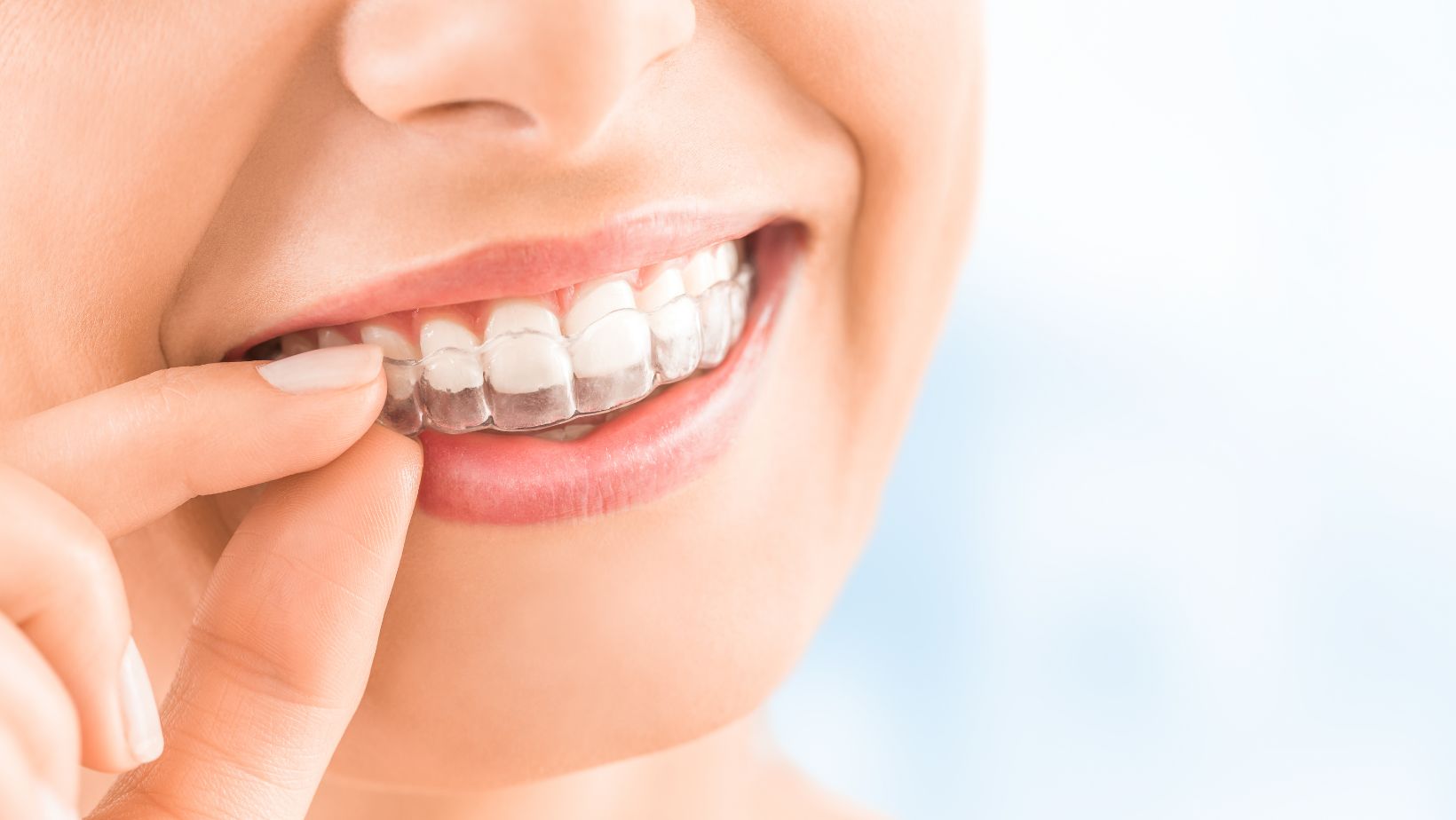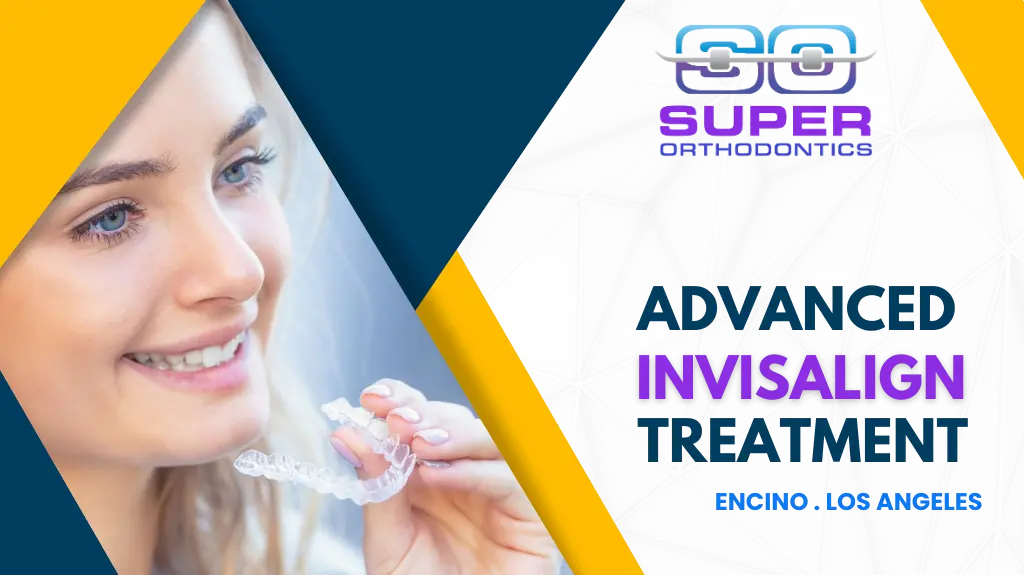Want a dazzling smile but traditional braces aren’t your style? Well, in that case Invisalign is the best alternative for you.
We’ll answer your questions and guide you through the key factors to consider before transforming your smile with Invisalign.
What is Invisalign? – An Alternative to Traditional Braces
Invisalign is a clear aligner system that straightens teeth like traditional braces, but with a more discreet approach. It uses a series of custom-made, near-invisible plastic aligners that gently shift your teeth into the desired position over time.
Unlike Braces, Invisalign aligners are removable for eating, drinking, brushing, and flossing, making oral hygiene and maintaining a social life easier.
The most important things to consider about Invisalign
Now that you know what Invisalign is, let’s look at the most important factors that you should consider:
What Material Is Used For Invisalign?
Invisalign uses a medical-grade, multi-layered thermoplastic polyurethane for its aligners. These aligners are biocompatible and approved for long-term oral use. This advanced material is meticulously engineered to be gentle on the oral tissues while providing the necessary rigidity to gradually shift teeth into desired positions.
The multi-layered structure of the aligners ensures optimal comfort and effectiveness. The biocompatibility of aligners means it is non-toxic and unlikely to cause allergic reactions, making it safe for prolonged contact with the mouth. Moreover, the material’s durability and flexibility allow for precise customization to fit individual dental arches, providing a comfortable orthodontic treatment experience.
Treatment Process
An expert Invisalign orthodontist first creates a 3D image of your mouth to map out a personalized treatment plan. Based on this plan, they create a series of comfortable plastic aligners you’ll wear for 20-22 hours daily. These aligners are typically switched every 1-2 weeks, gradually moving your teeth.
The 3D imaging technology, often involving advanced software and digital scanners, provides a highly accurate representation of your dental structure. This enables the orthodontist to meticulously plan tooth movements and create a series of aligners that progressively apply gentle pressure to guide your teeth into their desired positions.
The precise nature of this digital process ensures that each aligner fits snugly and effectively contributes to the overall treatment outcome.
Orthodontic Treatment by Invisalign
The list of orthodontic issues that can be fixed by aligners include the following:
Crowding: When teeth are too close together and there isn’t enough space in the jaw for proper alignment.
Spacing: When there are gaps between teeth due to missing teeth or teeth that are too far apart.
Misalignment: When teeth are not properly positioned in the jaw, such as rotated teeth or teeth that are tipped in or out.
Mild to moderate overbites: When the upper front teeth overlap the lower front teeth excessively.
Mild to moderate underbites: When the lower front teeth bite in front of the upper front teeth.
How Long Does Invisalign Take to Fix Your Smile?
Invisalign treatment typically takes 12-18 months, but it can vary depending on the complexity of your case and your adherence to the suggested wear time.
The duration of treatment is influenced by several factors, including the severity of misalignment, the patient’s age, and the specific treatment plan designed by the orthodontist. For instance, minor crowding or spacing issues may be corrected within a shorter time frame, while complex cases involving bite problems or severe misalignment may require a longer treatment period.
How much is Invisalign? – Cost Consideration
The actual cost of Invisalign varies depending on the severity of your case, your orthodontist’s location, and your orthodontist’s expertise. You can book a free consultation with Dr. Amir Assefnia, Board Certified Orthodontist to discuss your case and get guidance.
Is Invisalign Uncomfortable?
While Invisalign is generally comfortable, there can be an adjustment period. You might experience some initial watering and short-term soreness when switching to new aligners. A slight lisp may occur at first, but these discomforts usually subside within a few days as your mouth adjusts.
However, the level of discomfort can vary from person to person. Some individuals may experience minimal or no discomfort throughout their treatment, while others may have slightly more pronounced symptoms. It’s important to note that this initial discomfort is temporary and is a normal part of the tooth-moving process. As your teeth gradually shift into their desired positions, the pressure exerted by the aligners will lessen, leading to increased comfort.
How to Clean Invisalign?

Cleaning your Invisalign aligners properly is essential to maintaining their clarity and ensuring your treatment progresses smoothly. Here’s how you can keep them clean:
Rinse Regularly: Rinse your aligners under lukewarm water every time you remove them. This helps wash away saliva and plaque that can build up during wear.
Brush Gently: Use a soft-bristled toothbrush and clear, unscented liquid soap to gently brush your aligners.
Soak Daily: Soak your aligners daily in a cleaning solution, such as Invisalign Cleaning Crystals, or a retainer-cleaning solution. Follow the instructions on the product to ensure they are properly disinfected.
Avoid Staining Foods and Drinks: Remove your aligners when eating or drinking anything other than water to prevent staining. Colored or hot beverages can discolor the aligners.
Store Properly: When not wearing your aligners, store them in their case to keep them safe and clean. Leaving them out can expose them to bacteria and potential damage.
Regular Dental Check-ups: Keep up with your regular dental appointments. Your orthodontist can provide additional guidance and ensure your aligners stay in top condition.
By following these steps, you can keep your Invisalign aligners clean, clear, and effective throughout your treatment.
Can you Eat with Invisalign?
You should not eat or drink any beverage other than water while wearing aligners. These aligners can easily get stained if not removed while eating or drinking.
Importance of Consultation with an Expert Orthodontist
Ever wonder if Invisalign could be the key to your dream smile? While there are factors to consider, you don’t have to navigate them alone!
Connecting with an expert Orthodontist and discussing whether Invisalign treatment is right for you should be your first step.
Schedule a free consultation with Dr. Amir Assefnia, Board Certified Orthodontist, at Super Orthodontics. Dr. Amir Assefnia will assess your unique orthodontic needs, suggest the orthodontics treatment best for you, create a personalized treatment plan, and guide you through the seamless Invisalign process.
Don’t wait—unlock the confidence of a straighter, healthier smile.
Schedule your free consultation today and see how Invisalign can transform your smile effortlessly and discreetly!
Frequently Asked Questions
Does Insurance Cover Invisalign?
Insurance coverage for Invisalign varies from plan to plan. While some dental insurance plans consider aligners as orthodontic treatment and offer coverage similar to traditional braces, others may not cover it. The extent of coverage can also differ, with some plans covering a percentage of the total cost and others setting a specific maximum amount.
How Painful Are Aligners?
Invisalign is generally well-tolerated, with most people experiencing minimal discomfort. You might feel some tenderness or soreness when you first start wearing a new set of aligners as your teeth begin to move. This discomfort is usually mild and temporary, lasting a few days. As your teeth adjust, the pain should subside.
Can Invisalign Fix Overbite?
Invisalign, depending on the complexity, can fix mild to moderate overbites. It is best to consult an expert orthodontist for understanding if your overbite is treatable by aligners or not.
Can You Chew Gum with Invisalign?
No, as the gum might get stuck to your aligners and make it difficult to remove.



